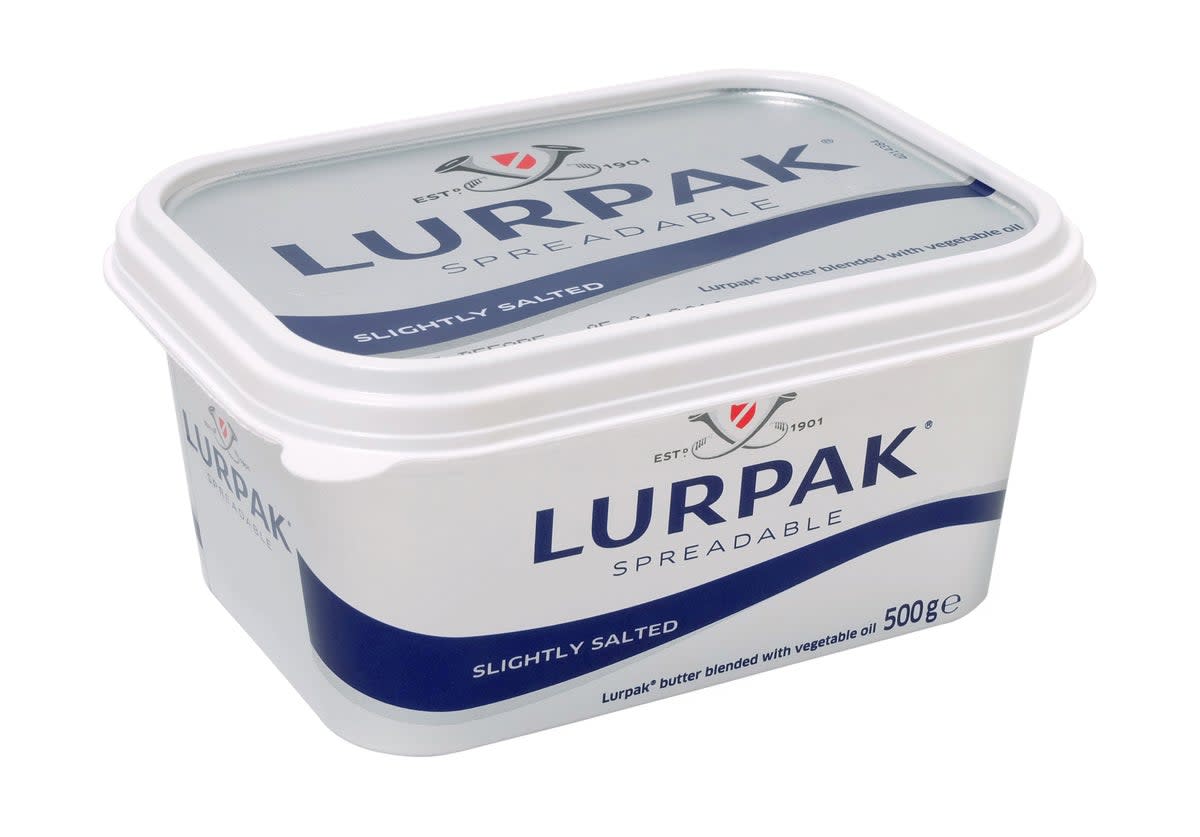Why has Lurpak become so expensive? Asda seen adding security tags to butter in latest update

Lurpak butter has become so expensive that supermarket Asda has been adding security tags to the tubs.
Amid the cost of living crisis, households are being faced with more expensive grocery and household bills. And it appears that the popular butter brand is not immune from the effects.
The butter company hit the headlines this week when a 1kg tub of Lurpak was spotted being sold for £9.35 at supermarket Iceland.
On Tuesday, journalist Charlie Bennet shared a photo of tagged Lurpak (selling for £6 for 750g) on Twitter and said: “Britain in 2022… Lurpak butter is at £6 a tub in Asda and even has a security tag on it.”
Britain in 2022… Lurpak butter is at £6 a tub in ASDA and even has a security tag on it.
Mental! 😂🤦🏼♂️ pic.twitter.com/ZxOocgYeZg— Charlie Bennett (@CharIieBennett) July 5, 2022
At the time of writing, 500g of Lurpak costs £5 in Asda, £5 in Iceland, £4.99 in Morrisons, £4.49 in Tesco, £4 in Sainsbury’s, £3.75 in Waitrose, and £3.50 in Co-op. These prices are based on online shopping, and prices in store may vary.
The UK is facing the highest rate of inflation in over 40 years, currently standing at 9.1 per cent, the highest since February 1982, when it reached 10.2 per cent.
Why has Lurpak butter become so expensive?
Lurpak has been explaining why its prices are so high on social media, telling customers that the retailers determine the price, not Lurpak itself.
The butter company said that farmers are also suffering from the effects of inflation, which is making it more expensive to produce milk.
A Lurpark spokesperson said: “Prices in store are decided by retailers, taking account of factors including what’s paid to farmers.
“Unfortunately, with farming facing huge inflation like everyone else, costs have had to rise. We are working hard to make sure our products continue to be accessible and affordable.”
They went on to explain that, “Unfortunately, our farmers are facing a similar situation with prices for the feed, fertiliser and fuel they need to produce milk, all rising significantly in recent months.
“While we don’t set the prices on the shelves, we do work closely with the retailers to ensure our farmers receive a fair price for the milk they produce.
“Prices on the shelves have had to rise in recent months to ensure our farmers can continue supplying the healthy and nutritious product that we all know and enjoy.”

 Yahoo News
Yahoo News 
